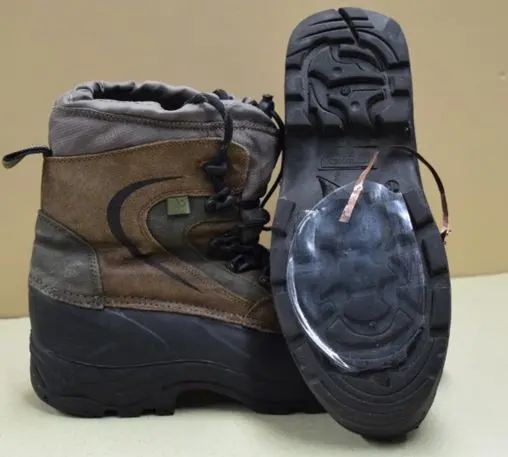Anyone who has left their iPhone in a subzero car only to find the battery dead, or watched a blanket of snow cast a shadow over their solar panels, knows: The freezing cold and electronics do not mix.
That may soon change. Researchers at UCLA have developed a first-of-its-kind breakthrough by building a small silicone sensor-generator that can harvest electricity directly from snow–dubbed a “snow-based triboelectric nanogenerator” or “Snow TENG.” It could lead to a new wave of wearable electronics, more efficient solar panels, and even entire buildings that can produce energy during winter weather with a simple coat of paint.

Since the 1960s, scientists have understood a strange phenomenon of snow: It’s positively charged. That means if it lands on something with a negative charge, it will pass over its electrons, creating static electricity.
“We know snow is willing to give up electrons, [so] we thought why not bring another material with the opposite charge to extract these electrons to create electricity,” says Maher El-Kady, assistant researcher at UCLA.
Researchers tested Teflon and aluminum foils for the job, but what worked best was simple silicone. This cheap, omnipresent substance used across almost every industry performed better than anything else at snagging electrons. What the team eventually worked out was a method to 3D print silicone on top of a plastic electrode, which could capture the static electricity harvested by the silicone. Snow just needs to fall, or come into contact with the silicone to create energy. As a bonus, it’s durable, flexible, and water-resistant, too–requiring neither metal nor batteries to work.

The team has already tested putting their snow TENG onto the bottom of hiking boots and bike tires. As the generator rolls through snow, it captures energy. It’s also a mini weather station of sorts, able to “see” the snow on its surface. This means it can count steps, or even record the movements of cross-country skis that smartwatches can’t decipher. Because its source materials are so inexpensive, El-Kady tells us that he thinks each small sensor could be built for all of $1. If you wanted to add in a Bluetooth chip to transmit wireless data, that may add on another buck or two. But a gold-banded Apple Watch this is not: Snow TENG is cheap.
Longer term, El-Kady imagines all sorts of other possibilities. Every year, snow covers an average of 17.8 million miles of the Earth. Many areas are permanently frozen. Given that it’s just silicone, Snow TENG could be developed into a clear, waterproof spray. It could be applied to leather goods. It could also be applied right on top of solar panels, making them four-season devices for more of the world by allowing them to generate energy in a snowstorm.
Right now, Snow TENG generates orders of magnitude less energy than solar panels–meaning it’s trivial energy in the context of a building–but El-Kady points out that the team has only built its proof of concept; it hasn’t optimized anything yet. He implies, offering another recent example of a nanogenerator’s rapid performance improvement as precedent, that Snow TENG could produce solar-level power in just a year or two.
Ultimately, El-Kady imagines that Snow TENG could be painted onto buildings (just as silicone paints are now), to provide some level of waterproofing and resistance from humidity. And of course, when it snowed, the building would basically be one giant frozen energy factory. Of course, Snow TENG doesn’t do much for the southern hemisphere. Ninety-eight percent of snowfall happens up north. But as the world faces a future filled with more extreme weather and an unending thirst for energy, we won’t just need one technology to get by. We’ll need a suite of them for every place–and every type of weather.
Recognize your brand’s excellence by applying to this year’s Brands That Matter Awards before the early-rate deadline, May 3.
